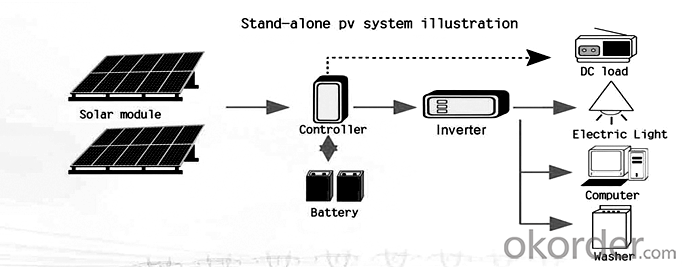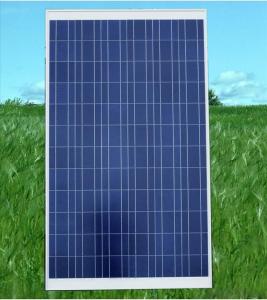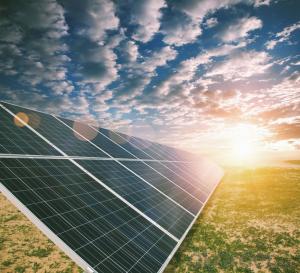265w Silicon Polycrystalline Solar Panel
- Loading Port:
- Guangzhou
- Payment Terms:
- TT or LC
- Min Order Qty:
- 200000 watt
- Supply Capability:
- 20000000 watt/month
OKorder Service Pledge
OKorder Financial Service
You Might Also Like
About us
We are a high-tech group wich specializes in solar products design,research, manufacture, sales,solar projects design and installation.
Our national sales service covers seven parts, including northeast, north, east, middle, south, northwest and southwest, international sales covers five continents and over forty countries, including Germany, Italy, Spain, France, America and Brazil etc.
Our present annual capacity is 6 million for wafer, 60MWp for solar cells,200MWp for solar modules and one hundred thousand for solar applications. It is expected that the annual capacity of 2012 will be up to 30 million for wafer, 300MWp for solar cells, 1000MW for solar modules and 2 million for solar applications.
INTRODUCTION
This installation Manual contains essential information for the electrical and mechanical installation that your must know before installing CUSTOMER PV modules. This also contains safety information you need to be familiar with .All the information described in this manual are the intellectual property of CNBM and based on the technologies and experiences that have been acquired and accumulated in the long history of CUSTOMER. This document does not constitute a warranty, expressed or implied.
CUSTOMER does not assume responsibility and expressly disclaims liability for loss, damage, or expense arising out of in anyway connected with installation, operation, use or maintenance of the PV modules. No responsibility is assumed by CUSTOMER for any infringement of patents or other rights of third parties that may result from use of PV module.
CUSTOMER reserves the right to make changes to the product, specifications or installation manual without prior notice.
WORK PRINCIPLE

Data sheet
Maximum power | 265W |
Cell type(mm) | Polycrystalline solar cell 156*156 |
Number of cell(pcs) | 60(6*10) |
Manufacture site | China |
Open-circuit voltage(voc) | 37.7V |
Maximum power voltage(vmp) | 30.6V |
Short-circuit current(isc) | 9.03A |
Optimum operating current(imp) | 8.66A |
Power tolerance | 0~+5W |
Module efficiency | 16.3% |
Dimensions(mm) | 1640*992*40 |
Weight | 19 kg |
Backsheet | Silver |
Frame Colar | White |
Frame | Anodized Aluminum Alloy |
- Q:I've heard that solar panels have back-up batteries for when it is cloudy or rainy that day.. is this true?
- A PV array produces electricity whenever the sun shines on it. This is true from sunrise until sunset, and often times even after the sun sets! (A full moon on a clear night can actually produce small amounts of current from a PV system.) Generally speaking, an array will produce its maximum power between roughly 9:00am and 3:00pm.
- Q:How do solar panels affect roof aesthetics?
- Solar panels can have both positive and negative impacts on roof aesthetics. On one hand, solar panels can enhance the visual appeal of a roof by adding a sleek and modern look. They can also make a statement about a homeowner's commitment to renewable energy. However, some people may find solar panels to be visually intrusive and believe that they disrupt the overall harmony and symmetry of a roof. Ultimately, the impact on roof aesthetics depends on individual preferences and the design of the solar panel installation.
- Q:i am working on a project which requires small solar panels. i am looking for ones about 3X4. is there any way i could get these? and where?
- There okorder
- Q:Do solar panels require regular cleaning?
- Yes, solar panels do require regular cleaning to maintain their efficiency. Dust, dirt, bird droppings, and other debris can accumulate on the surface of the panels, reducing their ability to generate electricity. Regular cleaning ensures optimal performance and maximizes energy output.
- Q:Can solar panels be installed in areas with high levels of saltwater exposure?
- Yes, solar panels can be installed in areas with high levels of saltwater exposure. However, it is important to choose solar panels that are specifically designed to withstand such conditions. These panels are typically made with corrosion-resistant materials and undergo rigorous testing to ensure durability in marine environments. Regular maintenance and cleaning may also be required to prevent salt buildup and optimize performance.
- Q:Photo-Voltaic solar panels are very expensive. Most of a home's energy needs are for heating water, heating and air-conditioning. All of these can be met with thermal solar collectors which are much less expensive. The thermal solar panels would heat water stored in a hot water tank which then can be used as hot water, to heat the home, or as the heat source to a Lithium Bromide Absorption chiller to air-condition a home. With the base line needs met without expensive panels and without inefficient energy conversions, only a small Photo-Voltaic array would be needed for the remaining power needs and since those needs are variable, there would still be power to sell to the grid.
- Just read some of the other posts and I am surprised at the answers. Solar thermal systems typically have a payback of less than seven years on residential system without the tax break. A complete system can be installed for about 5k or less. Compare that to 20k or more for PV with a fifteen to twenty year pay off. Each home and area is different so a site evaluation must be done for exact figures and pay offs. I am going off my own experience in my above statements Flat panel collectors work well in most areas for DHW. Evacuated tubes often run too hot which works well for some applications or high usage. Heating water is the single greatest energy usage other than space heating and cooling. It often surpasses the two above systems based on its widespread usage(every houshold in USA has one) and its the amount it is used(24/7@365) The amount of energy spent to heat water is by order of magnitude the greatest number out there. Having a solar thermal system providing hot water for a average American household is equivalent to taking 40,000 miles off the freeway in a car every year. The BTU's required to heat the water is huge. So why is this more developed cheaper and more efficient technology behind PV in awareness? Natural Gas the number one choice for heating water is cheap. It's by product is invisible and misunderstood. What I find fascinating is if you look at the increase in Natural Gas vs Electricity you will be surprised by how much it has jumped in the last seven years. It is not talked about nearly as much as electricity It does not get the same level of press that PV does. So in short the answer is cheap Natural Gas prices and public perception of this product have kept it off the list of many that are turning toward the green trend. It is less sexy than watching your meter spin backwards. It is the best improvement at the best cost except for conservation which is and was the most cost effective energy saving that can be employed
- Q:Can solar panels be used during a power outage?
- No, solar panels cannot be used during a power outage unless they are connected to a battery storage system. Without a battery backup, solar panels will also lose power when the grid goes down.
- Q:How do solar panels affect the electrical grid?
- Solar panels can have both positive and negative effects on the electrical grid. On the positive side, solar panels generate clean and renewable energy, which reduces the reliance on fossil fuels and decreases greenhouse gas emissions. Additionally, solar panels can help decentralize the grid by allowing individual households or buildings to generate their own electricity, reducing strain on the overall grid. However, the intermittent nature of solar power can pose challenges for grid operators, as it requires careful management to balance supply and demand. Moreover, the increased number of solar installations can also lead to voltage fluctuations and grid instability if not properly managed. Overall, while solar panels offer numerous benefits, their integration into the electrical grid requires careful planning and coordination.
- Q:Can solar panels power an electric car?
- Yes, solar panels can power an electric car. Solar panels generate electricity from sunlight, which can be used to charge the batteries of electric cars. This allows the car to run on clean, renewable energy, reducing the reliance on fossil fuels and providing a sustainable transportation solution.
- Q:Can solar panels be integrated into windows?
- Yes, solar panels can be integrated into windows. This innovative technology is called Building Integrated Photovoltaics (BIPV), where solar cells are incorporated into the glass panels of windows. BIPV allows for the generation of renewable energy while still maintaining the functionality and transparency of windows.
1. Manufacturer Overview |
|
|---|---|
| Location | |
| Year Established | |
| Annual Output Value | |
| Main Markets | |
| Company Certifications | |
2. Manufacturer Certificates |
|
|---|---|
| a) Certification Name | |
| Range | |
| Reference | |
| Validity Period | |
3. Manufacturer Capability |
|
|---|---|
| a)Trade Capacity | |
| Nearest Port | |
| Export Percentage | |
| No.of Employees in Trade Department | |
| Language Spoken: | |
| b)Factory Information | |
| Factory Size: | |
| No. of Production Lines | |
| Contract Manufacturing | |
| Product Price Range | |
Send your message to us
265w Silicon Polycrystalline Solar Panel
- Loading Port:
- Guangzhou
- Payment Terms:
- TT or LC
- Min Order Qty:
- 200000 watt
- Supply Capability:
- 20000000 watt/month
OKorder Service Pledge
OKorder Financial Service
Similar products
New products
Hot products






























